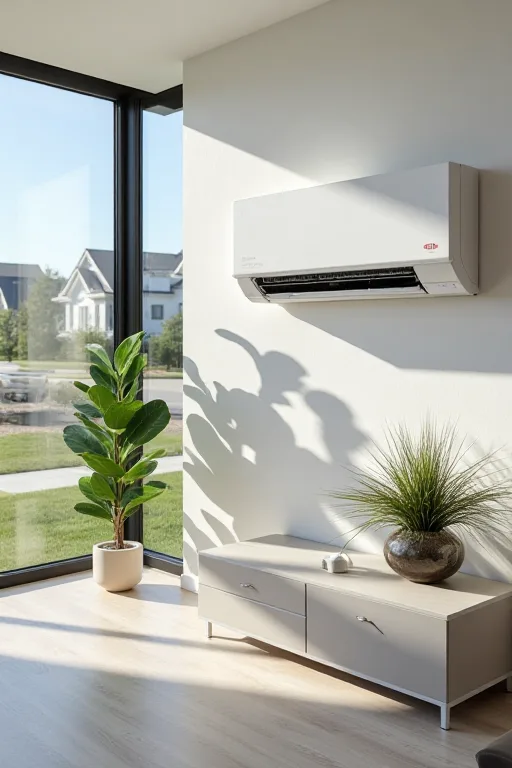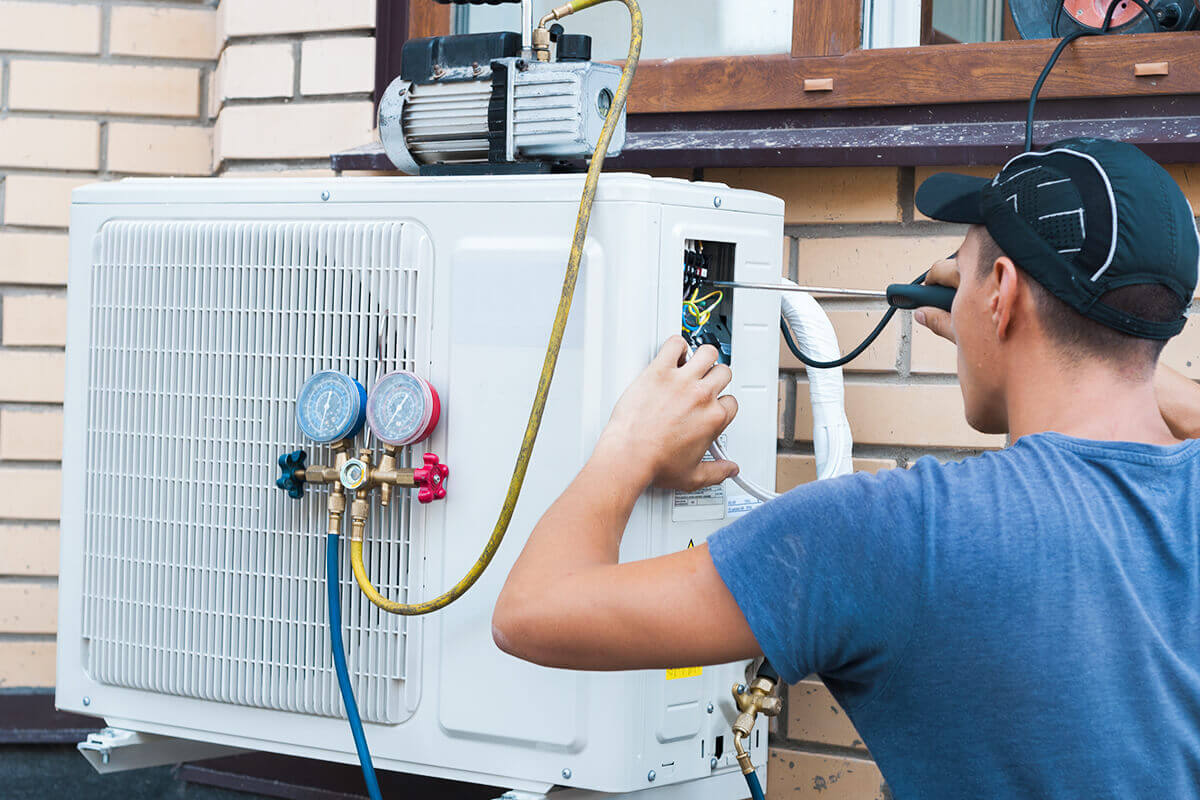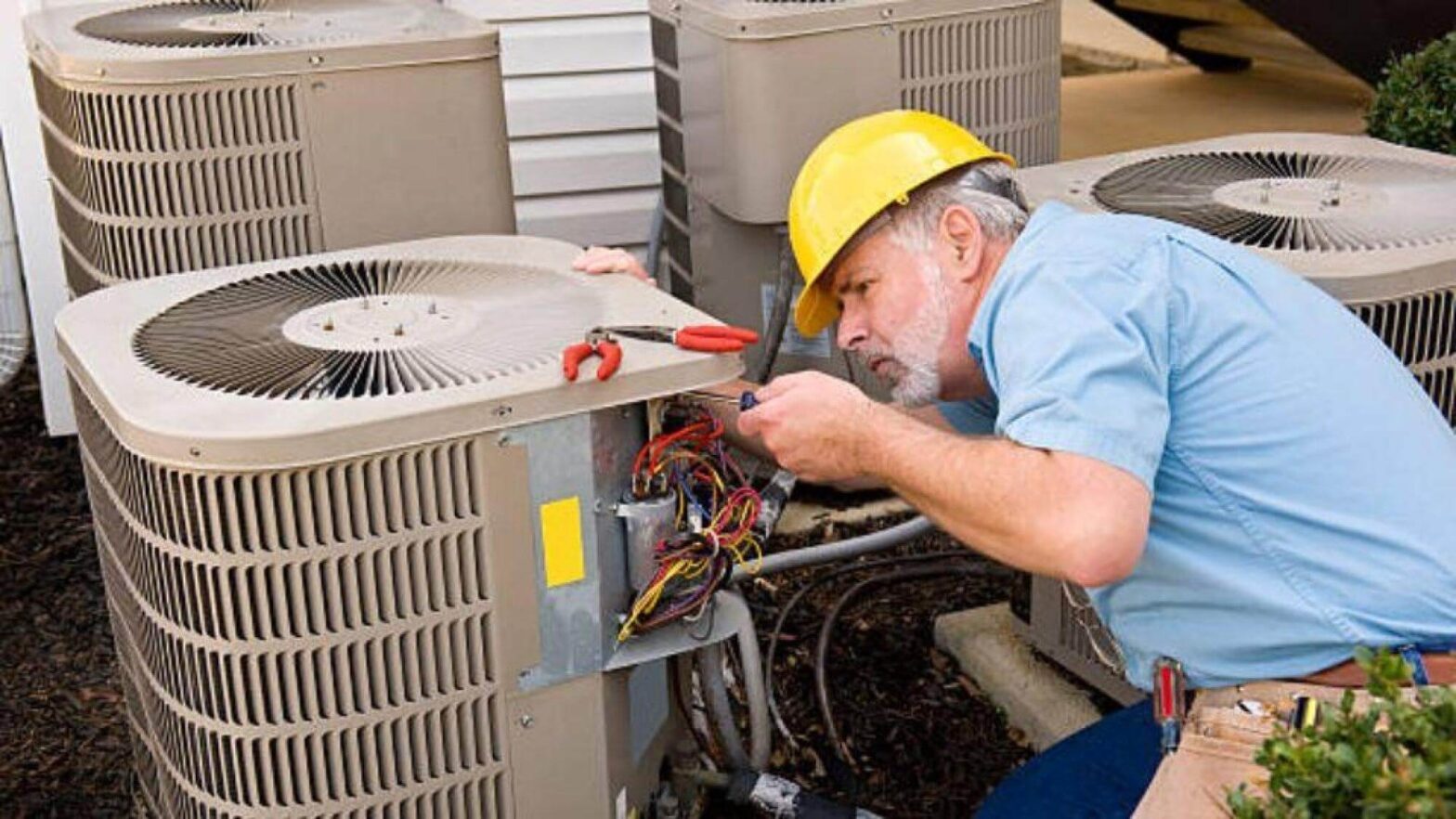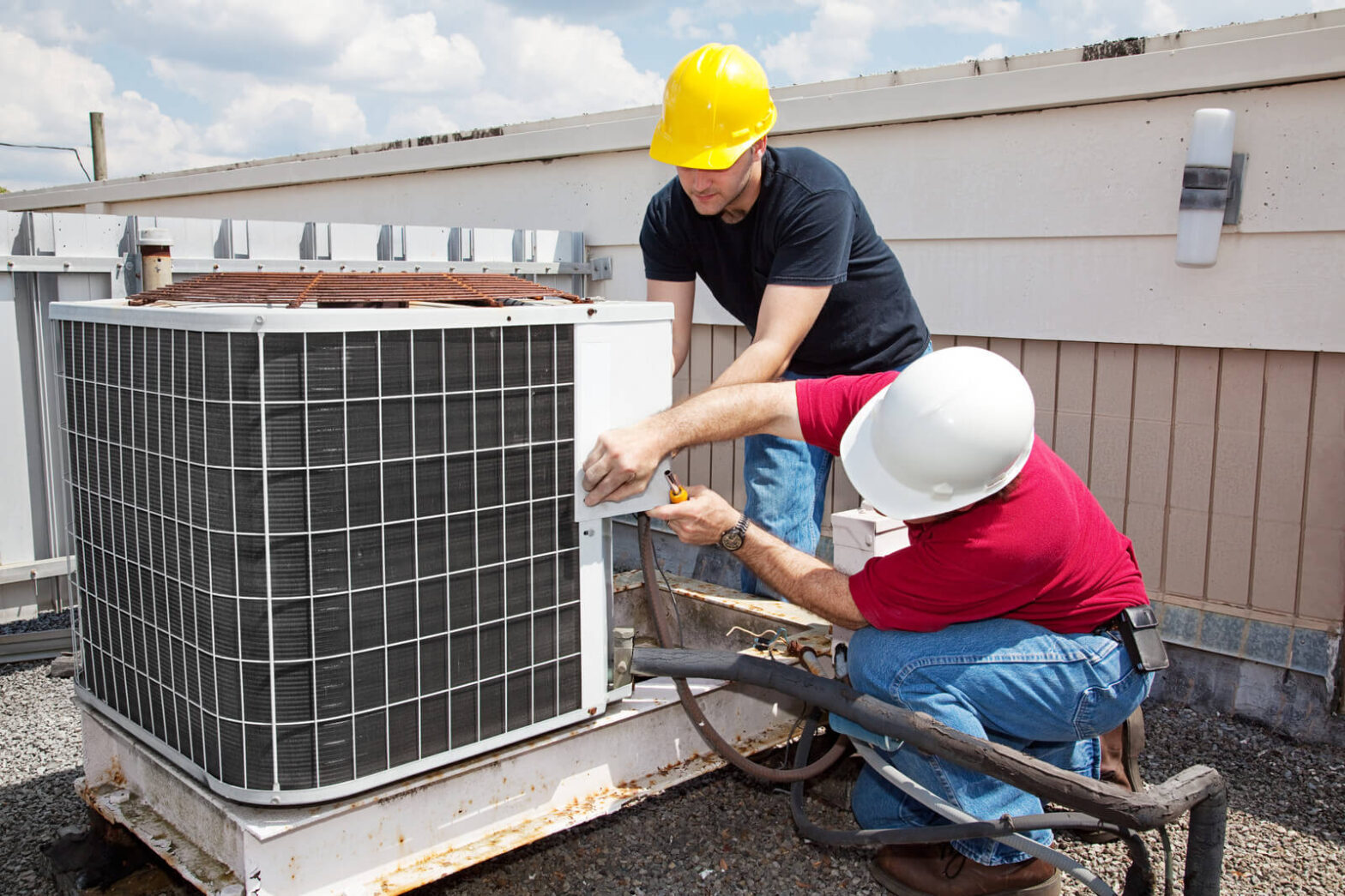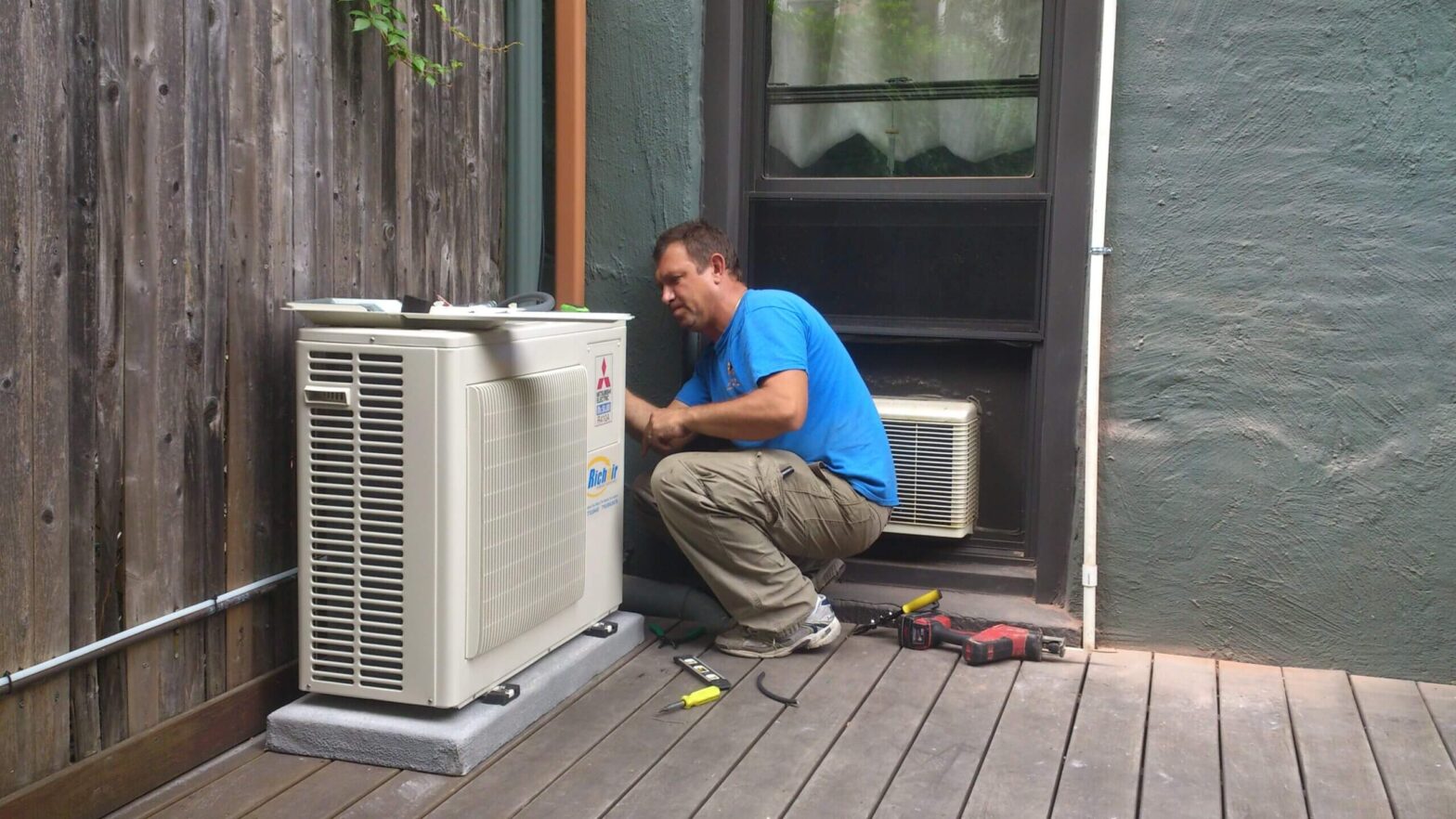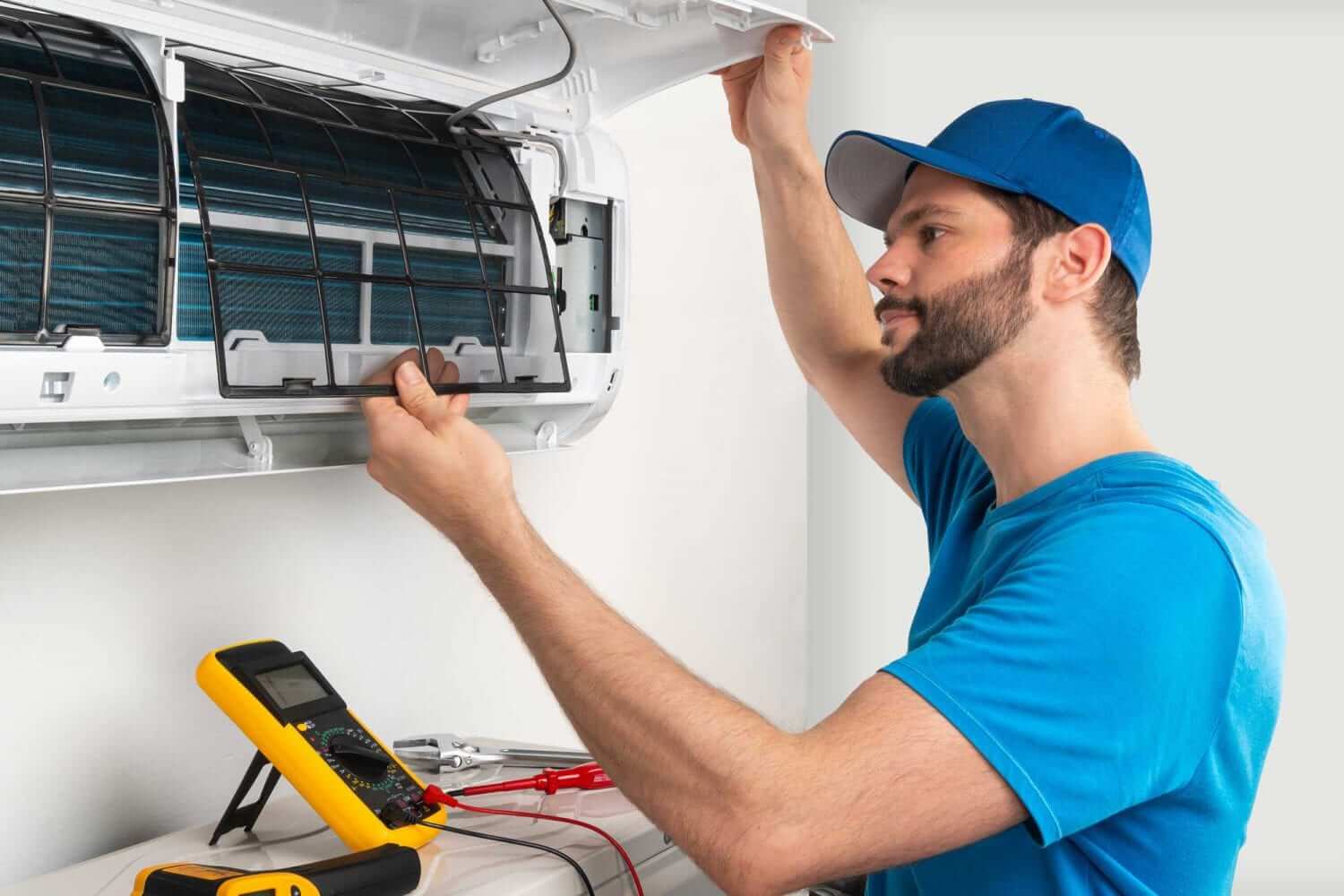HVAC Lifespan: Maximizing the Life of Your Heating and Cooling Systems
Understanding HVAC Lifespan
The HVAC lifespan refers to the duration a heating, ventilation, and air conditioning system remains functional and efficient before requiring significant repairs or complete replacement. On average, HVAC systems in residential settings last between 15 to 25 years, while commercial systems can last up to 30 years with proper maintenance. Several factors influence this lifespan, including the quality of installation, frequency of maintenance, environmental conditions, and the quality of components used.
Understanding the expected lifespan of your HVAC system helps in planning for replacements, budgeting for potential repairs, and ensuring that your system operates efficiently throughout its life.
Average Lifespan of HVAC Systems
The lifespan of an HVAC system varies based on its type, usage, maintenance, and environmental factors. Here’s a general overview:
- Furnaces: Typically last between 15 to 20 years. Gas furnaces may have a slightly shorter lifespan compared to electric furnaces due to the wear and tear from combustion.
- Air Conditioners: Generally last about 15 years. Regular maintenance can extend their lifespan.
- Heat Pumps: Similar to air conditioners, heat pumps can last between 15 to 20 years.
- Boilers: High-quality boilers can last up to 30 years with proper maintenance.
- Ductless Mini-Splits: These systems can last between 12 to 20 years, depending on usage and maintenance.
It's important to note that these are average estimates. Some systems may fail sooner due to poor maintenance or harsh operating conditions, while others may last longer with diligent care.
Residential vs. Commercial HVAC Lifespan
- Residential Systems: Generally, residential HVAC systems are designed for moderate usage. A typical home HVAC system may require replacement after 15-25 years.
- Commercial Systems: Commercial HVAC systems are built for more intensive use and may incorporate more robust components. With proper maintenance, these systems can last up to 30 years.
Regional Variations
The lifespan of HVAC systems can also vary based on regional factors such as climate. For instance, in regions with extreme temperatures, HVAC systems may experience more wear and tear, potentially shortening their lifespan. Conversely, milder climates may allow systems to operate longer with less strain.
Factors Affecting HVAC Lifespan
Several factors influence how long your HVAC system will last. Understanding these can help you take proactive steps to extend the life of your system.
1. Maintenance
Regular maintenance is paramount in ensuring the longevity of your HVAC system. This includes routine inspections, cleaning, and timely repairs. Neglecting maintenance can lead to decreased efficiency, increased wear and tear, and ultimately, a shorter lifespan.
Key Maintenance Tasks:
- Replacing or Cleaning Air Filters: Monthly replacements or cleanings prevent dust and debris from accumulating, ensuring optimal airflow and reducing strain on the system.
- Inspecting and Cleaning Ducts Annually: Clean ducts improve air quality and system efficiency by removing blockages and leaks.
- Checking Refrigerant Levels and Inspecting for Leaks: Proper refrigerant levels are essential for efficient cooling. Leaks can reduce system performance and cause damage to components.
- Lubricating Moving Parts: Regular lubrication reduces friction and wear on motors and other moving parts, enhancing system longevity.
- Inspecting Electrical Connections: Tight and secure electrical connections prevent system failures and ensure safe operation.
2. Usage Patterns
The amount of time your HVAC system operates significantly impacts its lifespan. Systems that run continuously or are heavily used are more prone to wear and tear. Conversely, systems that are used judiciously and only when necessary tend to last longer.
Tips for Managing Usage:
- Use Programmable Thermostats: Automate temperature adjustments based on occupancy and time of day to optimize system usage.
- Implement Zoning Systems: Control heating and cooling in different areas of your building independently, reducing unnecessary load on the entire system.
- Encourage Energy-Efficient Practices: Simple actions like closing doors and windows, using ceiling fans, and insulating spaces can reduce the demand on your HVAC system.
3. Installation Quality
Proper installation is critical for the efficient operation and longevity of your HVAC system. Incorrect sizing, poor ductwork design, and improper setup can strain the system, leading to premature failures.
Best Practices for Installation:
- Hire Certified and Experienced HVAC Professionals: Ensure that installers are qualified and adhere to industry standards.
- Ensure Accurate Sizing: An HVAC system that is too large or too small for the space will operate inefficiently and experience more wear.
- Use High-Quality Materials and Components: Investing in quality parts during installation can enhance system performance and durability.
- Follow Manufacturer Guidelines and Industry Standards: Adhering to recommended practices ensures optimal system functionality and longevity.
4. Environmental Factors
Environmental conditions where the HVAC system operates can influence its lifespan. Factors such as extreme temperatures, high humidity, dust, and pollution can accelerate wear and tear.
Mitigating Environmental Impacts:
- Install Air Purifiers: Reduce dust, pollutants, and allergens that can clog filters and strain the system.
- Ensure Adequate Ventilation: Proper ventilation manages humidity levels, preventing mold growth and reducing system load.
- Protect Outdoor Units: Install outdoor HVAC units in sheltered areas to protect them from harsh weather conditions. Regularly clean debris and ensure proper drainage to prevent damage.
5. Component Quality
The quality of the components used in your HVAC system plays a significant role in determining its lifespan. High-quality parts are more durable, efficient, and less likely to fail compared to cheaper alternatives.
Choosing Quality Components:
- Invest in Reputable Brands: Select components from well-known manufacturers known for reliability and longevity.
- Prioritize High-Efficiency Components: Energy-efficient parts not only reduce operational costs but also minimize wear on the system.
- Consider Warranties and Support Services: Components with longer warranties and reliable support services offer peace of mind and protection against premature failures.
6. System Design and Integration
A well-designed HVAC system that integrates seamlessly with other building systems can enhance efficiency and extend lifespan. Proper design ensures balanced airflow, optimal temperature distribution, and minimal stress on individual components.
Design Considerations:
- Balanced Airflow: Ensures that heating and cooling are evenly distributed throughout the building, preventing overworking of the system.
- Proper Ventilation: Adequate ventilation supports indoor air quality and reduces system strain.
- Integration with Other Building Systems: Coordinating HVAC with lighting, security, and other systems through a centralized Building Management System (BMS) can optimize overall building performance.
7. Technological Advancements
Modern HVAC systems incorporate advanced technologies that enhance efficiency and durability. Features such as variable speed motors, smart thermostats, and energy recovery ventilators can improve performance and extend system lifespan.
Technological Features to Consider:
- Variable Speed Motors: Adjust motor speed based on demand, reducing energy consumption and wear on components.
- Smart Thermostats: Optimize system operation through intelligent scheduling and real-time adjustments.
- Energy Recovery Ventilators (ERV): Recover energy from exhaust air to pre-condition incoming fresh air, enhancing system efficiency and reducing load.
Signs Your HVAC System is Nearing End of Life
Recognizing the signs that your HVAC system is approaching the end of its lifespan can help you make informed decisions about repairs or replacements. Here are common indicators:
1. Frequent Repairs
If your system requires frequent repairs, it may be a sign that it's nearing the end of its useful life. Constant issues can lead to increased costs and reduced reliability.
2. Rising Energy Bills
A noticeable increase in energy bills without a corresponding increase in usage often indicates that your HVAC system is losing efficiency. Older systems may require more energy to perform the same functions as newer, more efficient models.
3. Uneven Heating or Cooling
Inconsistent temperatures throughout your building suggest that the system is struggling to maintain desired conditions. This could be due to aging components, ductwork issues, or inadequate system capacity.
4. Strange Noises
Unusual noises such as grinding, squealing, or banging can signal mechanical problems that may be difficult to fix as the system ages. These noises often indicate worn-out parts or issues with the motor and blower.
5. Poor Air Quality
If you notice an increase in dust, mold, or allergens in the air, your HVAC system might be failing to filter and circulate air effectively. Poor air quality can also be a sign of a failing blower motor or clogged filters.
6. Frequent Cycling
Short cycling, where the system turns on and off frequently, can indicate that it's overworking and may be on the verge of failure. Short cycling increases wear and tear on components and reduces system efficiency.
7. Visible Rust or Corrosion
Physical signs of wear, such as rust or corrosion on the unit, can compromise its functionality and signal that it's time for a replacement. Corrosion can lead to leaks, reduced airflow, and mechanical failures.
8. Age of the System
As mentioned earlier, the average lifespan of HVAC systems varies. If your system is approaching or has exceeded its expected lifespan, it's likely time to consider a replacement, even if it appears to be functioning well.
9. Increased Humidity Levels
An aging HVAC system may struggle to control humidity levels, leading to dampness and mold growth. Consistently high humidity levels can indicate that the system's cooling capabilities are diminishing.
10. Lack of Refrigerant
If your HVAC system is low on refrigerant, it may not be cooling effectively. Refrigerant leaks are a common issue in older systems and can severely impact performance and efficiency.
How to Extend the Lifespan of Your HVAC System
While HVAC systems have a natural lifespan, several strategies can help extend their operational life, ensuring you get the most out of your investment.
1. Regular Maintenance
Consistent maintenance is the most effective way to prolong your HVAC system's lifespan. Schedule annual inspections with a certified technician to identify and address potential issues early. During maintenance visits, technicians will:
- Inspect and clean components.
- Check refrigerant levels.
- Test electrical connections.
- Lubricate moving parts.
- Assess overall system performance.
2. Proper Usage
Optimizing how you use your HVAC system can reduce unnecessary strain. Utilize programmable thermostats to manage temperatures efficiently, avoid extreme temperature settings, and ensure that your system isn't overworking.
Usage Tips:
- Set Reasonable Temperature Ranges: Avoid setting your thermostat to extreme temperatures. For example, setting the cooling temperature to 75°F instead of 65°F can significantly reduce system strain.
- Use Timers and Schedules: Program your thermostat to adjust temperatures based on occupancy and time of day, ensuring the system operates only when needed.
- Optimize Ventilation: Proper ventilation reduces the load on your HVAC system by removing excess heat and moisture from indoor environments.
3. Upgrades and Replacements of Components
Replacing worn-out or outdated components can enhance system performance and prevent further damage. Upgrading to energy-efficient parts can also improve overall efficiency and extend the system's life.
Key Components to Upgrade:
- Air Filters: Upgrade to high-efficiency filters that capture more particulates and improve air quality.
- Blower Motors: Replace aging blower motors with variable speed models for better airflow and efficiency.
- Thermostats: Install smart thermostats that optimize system operation based on real-time data.
- Coils and Heat Exchangers: Clean or replace coils and heat exchangers to maintain efficient heat transfer and airflow.
4. Ensuring Proper Installation
If you're installing a new HVAC system, ensure that it is correctly sized and installed by professionals. Proper installation minimizes operational stress and maximizes efficiency.
Installation Best Practices:
- Accurate Load Calculation: Perform a detailed load calculation to determine the correct system size based on the building's heating and cooling needs.
- Quality Ductwork: Ensure that ductwork is properly designed, sealed, and insulated to prevent air leaks and maintain balanced airflow.
- Professional Setup: Hire certified installers who follow manufacturer guidelines and industry standards to ensure optimal system performance.
5. Enhancing Indoor Air Quality
Good indoor air quality reduces the load on your HVAC system by preventing dust, allergens, and contaminants from accumulating. This can extend the system's lifespan by reducing wear on components.
Air Quality Enhancements:
- Install Air Purifiers: Use HEPA filters or UV-C purifiers to remove airborne pollutants and pathogens.
- Manage Humidity Levels: Use dehumidifiers or humidifiers to maintain optimal humidity levels, preventing mold growth and reducing system strain.
- Regular Cleaning: Keep indoor spaces clean to minimize dust and debris that can clog filters and reduce airflow.
6. Insulating Your Home or Building
Proper insulation helps maintain stable indoor temperatures, reducing the demand on your HVAC system. Ensure that walls, attics, and floors are well-insulated to prevent thermal leakage.
Insulation Tips:
- Seal Air Leaks: Use weather stripping and caulking to seal gaps around doors, windows, and other openings.
- Upgrade Insulation Materials: Consider high-quality insulation materials with better thermal properties for improved efficiency.
- Insulate Ductwork: Insulate ducts, especially those located in unconditioned spaces, to prevent energy loss and maintain airflow temperature.
7. Protecting Outdoor Units
Outdoor HVAC units are exposed to the elements and can be prone to damage. Protect them by keeping the area around the unit clear of debris, ensuring proper drainage, and using protective covers during extreme weather conditions.
Protection Measures:
- Clear Debris: Regularly remove leaves, branches, and other debris from around the outdoor unit to ensure unobstructed airflow.
- Proper Drainage: Ensure that the drainage pipes are clear and functioning to prevent water buildup and potential damage.
- Install Protective Covers: Use weather-resistant covers during harsh weather to shield the unit from rain, snow, and excessive heat.
8. Monitoring Energy Usage
Use energy monitoring tools to track your HVAC system's performance and identify unusual energy consumption patterns. This can help detect issues early and maintain optimal efficiency.
Monitoring Strategies:
- Smart Thermostats: Utilize smart thermostats that provide detailed energy usage reports and allow remote monitoring.
- Energy Management Systems: Implement comprehensive energy management systems that track HVAC performance and identify inefficiencies.
- Regular Audits: Conduct periodic energy audits to assess system efficiency and identify areas for improvement.
9. Implementing Zoning Systems
Zoning systems allow you to control heating and cooling in different areas of your building independently. This targeted approach reduces unnecessary system strain and enhances overall efficiency.
Zoning Benefits:
- Customized Comfort: Provide individualized temperature settings for different zones based on occupancy and usage.
- Energy Savings: Reduce energy waste by operating the HVAC system only where and when it's needed.
- Extended System Life: Lower overall system load reduces wear and tear, extending HVAC lifespan.
10. Educating Occupants
Educate building occupants on energy-efficient practices and the importance of maintaining optimal indoor environments. Informed occupants can contribute to system efficiency and longevity through mindful usage.
Education Tips:
- Provide Guidelines: Share best practices for HVAC usage, such as adjusting thermostats when leaving the building and using blinds to control indoor temperatures.
- Promote Awareness: Highlight the benefits of energy conservation and regular maintenance in enhancing system performance and lifespan.
- Encourage Reporting: Create channels for occupants to report unusual system behavior or air quality issues promptly.
Cost Implications of HVAC Lifespan
Understanding the financial aspects of HVAC lifespan is essential for making informed decisions about maintenance, repairs, and replacements.
1. Initial Investment vs. Long-term Costs
Investing in a high-quality HVAC system may have a higher upfront cost but can lead to significant savings in the long run through energy efficiency and reduced maintenance needs. Conversely, opting for cheaper systems might save money initially but result in higher operational costs and frequent repairs.
Considerations:
- Quality vs. Cost: Higher-quality systems typically offer better performance, longer lifespans, and lower maintenance costs.
- Energy Efficiency: Energy-efficient systems reduce utility bills, providing substantial long-term savings.
- Warranty and Support: Systems with comprehensive warranties and reliable support services can minimize unexpected expenses.
2. Repair vs. Replacement
Deciding between repairing an old HVAC system or replacing it depends on several factors, including the cost of repairs, the system's age, and its overall condition. As a general rule, if repair costs exceed 50% of the system's value or if the system is nearing the end of its lifespan, replacement might be the more economical choice.
Factors to Consider:
- Repair Costs: Minor repairs can range from $100 to $500, while major repairs might cost upwards of $1,000.
- System Age: Older systems are more likely to require frequent repairs and may not benefit from new energy-efficient technologies.
- Energy Efficiency: Newer systems are generally more energy-efficient, providing cost savings that can offset replacement costs over time.
- Reliability: Replacement systems offer improved reliability and performance, reducing downtime and operational disruptions.
Replacement Benefits:
- Enhanced Efficiency: New systems operate more efficiently, reducing energy consumption and operational costs.
- Advanced Features: Modern HVAC systems come with advanced features like smart controls, improved filtration, and better climate management.
- Warranty Coverage: New systems are typically covered by comprehensive warranties, providing protection against future repairs.
Choosing the Right HVAC System for Longevity
Selecting the appropriate HVAC system is crucial for ensuring longevity and maximizing efficiency. Here are key considerations:
1. Types of HVAC Systems
Different HVAC systems offer varying lifespans and efficiencies. Understanding the types available can help you choose the best fit for your needs.
- Split Systems: Consist of an outdoor unit and an indoor furnace or air handler. They are versatile and suitable for most homes.
- Packaged Systems: All components are housed in a single outdoor unit, ideal for buildings with limited indoor space.
- Heat Pumps: Provide both heating and cooling, offering energy-efficient alternatives to traditional systems.
- Ductless Mini-Splits: Ideal for homes without existing ductwork, offering flexibility and efficiency.
- Geothermal Systems: Utilize underground thermal energy for heating and cooling, offering high efficiency and long lifespans.
2. Energy Efficiency Ratings
Selecting an energy-efficient HVAC system not only reduces operational costs but also contributes to a longer lifespan by minimizing strain on components.
Key Ratings to Consider:
- SEER (Seasonal Energy Efficiency Ratio): Measures cooling efficiency. Higher SEER ratings indicate better efficiency.
- AFUE (Annual Fuel Utilization Efficiency): Measures furnace efficiency. Higher AFUE ratings mean more efficient fuel use.
- HSPF (Heating Seasonal Performance Factor): Measures heat pump efficiency. Higher HSPF ratings denote better performance.
Benefits of High-Efficiency Systems:
- Lower Energy Bills: Reduced energy consumption leads to significant cost savings.
- Reduced Environmental Impact: More efficient systems emit fewer greenhouse gases, contributing to environmental sustainability.
- Enhanced Comfort: High-efficiency systems maintain more consistent temperatures and better humidity control.
3. Brand and Quality Considerations
Choosing reputable brands known for reliability and quality can significantly impact your HVAC system's lifespan. Research brands, read reviews, and consult with professionals to select a system that meets your needs and stands the test of time.
Top HVAC Brands:
- Trane: Known for durability and reliability, Trane offers a wide range of high-quality HVAC systems.
- Carrier: A leader in HVAC technology, Carrier provides energy-efficient and innovative solutions.
- Lennox: Offers highly efficient systems with advanced features, focusing on both performance and sustainability.
- Rheem: Known for robust and reliable HVAC systems, Rheem offers a variety of options for different needs.
- Goodman: Provides cost-effective HVAC solutions without compromising on quality and performance.
Quality Indicators:
- Build Quality: Systems constructed with durable materials and precise engineering are likely to last longer.
- Warranty Coverage: Comprehensive warranties indicate manufacturer confidence in product longevity and reliability.
- Customer Support: Strong customer service and support networks enhance system maintenance and problem resolution.
Future Trends in HVAC Technology and Lifespan
The HVAC industry is continuously evolving, with advancements aimed at improving efficiency, sustainability, and longevity. Here are some future trends that will shape the lifespan of HVAC systems:
1. Smart HVAC Systems
Integration with smart technologies allows HVAC systems to be more responsive and efficient. Smart thermostats, IoT connectivity, and advanced control systems enable real-time monitoring and adjustments, enhancing performance and extending system lifespan.
Features of Smart HVAC Systems:
- Remote Monitoring and Control: Manage your HVAC system from anywhere using smartphones and other devices.
- Predictive Maintenance: AI algorithms predict potential issues before they become major problems, allowing for timely maintenance.
- Energy Optimization: Automatically adjust settings based on occupancy, weather forecasts, and usage patterns to maximize energy efficiency.
2. Energy Recovery Ventilation
Energy recovery technologies capture energy from exhaust air to pre-condition incoming air, reducing the load on HVAC systems. This not only improves efficiency but also contributes to longer system life by minimizing operational strain.
Benefits of Energy Recovery Ventilation:
- Reduced Energy Consumption: Reusing energy from exhaust air lowers the overall energy demand for heating and cooling.
- Improved Air Quality: Enhanced ventilation systems ensure a steady supply of fresh, conditioned air.
- Extended System Lifespan: Lower energy demands reduce wear and tear on HVAC components, prolonging system life.
3. Renewable Energy Integration
The integration of renewable energy sources, such as solar panels and geothermal energy, with HVAC systems will become more prevalent. This reduces reliance on traditional energy sources, lowers operational costs, and enhances system durability.
Renewable Integration Benefits:
- Sustainability: Utilizing renewable energy aligns with global sustainability goals and reduces carbon footprints.
- Energy Independence: Renewable energy sources provide a stable and independent power supply, reducing dependency on the grid.
- Cost Savings: Long-term savings from reduced energy bills and potential incentives make renewable integration financially attractive.
4. Advanced Materials
The use of advanced materials in HVAC components can improve durability and efficiency. Materials resistant to corrosion, wear, and extreme temperatures can extend the lifespan of key components.
Innovative Materials:
- Corrosion-Resistant Alloys: Enhance the longevity of outdoor units and heat exchangers.
- High-Efficiency Heat Exchangers: Improve thermal transfer rates, enhancing system efficiency and performance.
- Lightweight Composites: Reduce the overall weight of HVAC units, minimizing strain on supporting structures and components.
5. AI and Machine Learning
Artificial Intelligence and machine learning algorithms can predict maintenance needs, optimize system performance, and identify inefficiencies. These technologies enable proactive maintenance, reducing downtime and improving system efficiency.
AI Applications in HVAC:
- Performance Analytics: Continuously analyze system data to identify performance trends and anomalies.
- Adaptive Control Systems: Adjust HVAC operations in real-time based on data-driven insights.
- Fault Detection: Identify and diagnose system faults early, preventing major breakdowns and extending system life.
6. Eco-friendly Refrigerants
The shift towards low-GWP and natural refrigerants minimizes environmental impact and aligns with global sustainability goals. Eco-friendly refrigerants also contribute to more efficient system operation, enhancing longevity.
Eco-friendly Refrigerant Options:
- Ammonia (NH₃): A natural refrigerant with zero ozone depletion potential (ODP) and low GWP.
- Carbon Dioxide (CO₂): Non-toxic and non-flammable, with a GWP of 1, making it environmentally friendly.
- Hydrocarbons (e.g., Propane, Isobutane): Natural refrigerants with low GWP and high energy efficiency.
7. Modular HVAC Systems
Modular designs allow for easy upgrades and replacements of individual components without overhauling the entire system. This flexibility can extend the overall lifespan by keeping systems up-to-date with the latest technologies.
Advantages of Modular Systems:
- Scalability: Easily expand or reduce system capacity based on changing needs.
- Ease of Maintenance: Replace or upgrade modules independently, minimizing downtime and operational disruptions.
- Customization: Tailor systems to specific requirements without extensive redesigns.
8. Enhanced Indoor Air Quality Solutions
Advanced air purification and ventilation technologies ensure healthier indoor environments, reducing the strain on HVAC systems and preventing premature wear and tear.
Air Quality Enhancements:
- HEPA Filters: Capture fine particulates, allergens, and pollutants, improving overall air quality.
- UV-C Purifiers: Eliminate bacteria, viruses, and mold spores, enhancing air cleanliness.
- Humidity Control Systems: Maintain optimal humidity levels, preventing mold growth and reducing system strain.
9. Integration with Renewable Energy Systems
Integrated systems combine multiple renewable energy sources, such as solar, wind, and geothermal, with HVAC operations. This holistic approach ensures a reliable and sustainable energy supply, enhancing overall system resilience and efficiency.
Integrated System Benefits:
- Diversified Energy Sources: Reduce dependency on a single energy source, enhancing system resilience.
- Optimized Energy Usage: Balance energy supply and demand through intelligent system management.
- Sustainability: Promote the use of clean energy, contributing to environmental stewardship.
10. Biophilic Design Integration
Biophilic design, which incorporates natural elements into building design, will influence HVAC systems by promoting natural ventilation, daylighting, and integration with green spaces. This approach enhances occupant well-being and reduces the reliance on mechanical HVAC systems.
Biophilic Design Benefits:
- Natural Ventilation: Utilize operable windows and strategic placement of vents to enhance airflow without over-reliance on mechanical systems.
- Daylighting: Reduce the need for artificial lighting, decreasing energy consumption and heat load on HVAC systems.
- Green Spaces: Incorporate indoor plants and green walls to improve air quality and provide natural cooling effects.
11. Blockchain for Energy Management
Blockchain technology will be utilized for secure and transparent energy transactions, enabling peer-to-peer energy trading and decentralized energy management. This innovation enhances the efficiency and sustainability of HVAC operations by optimizing energy distribution and usage.
Blockchain Applications:
- Energy Trading Platforms: Facilitate the exchange of renewable energy between consumers and producers, optimizing energy distribution.
- Transparent Energy Tracking: Ensure accurate tracking and reporting of energy usage, enhancing accountability and efficiency.
- Decentralized Control: Enable localized energy management, reducing transmission losses and enhancing system resilience.
12. Focus on Resilience and Adaptability
Future HVAC systems will be designed for greater resilience and adaptability, capable of responding to extreme weather events and fluctuating energy demands. These systems ensure consistent performance and reliability in the face of environmental challenges.
Resilient System Features:
- Redundant Components: Incorporate backup systems to maintain operation during component failures.
- Adaptive Controls: Adjust system operations based on real-time environmental and usage data.
- Robust Design: Utilize materials and construction techniques that withstand harsh conditions and extreme temperatures.
13. Advanced Monitoring and Diagnostics
Innovative monitoring and diagnostic tools provide real-time insights into system performance, enabling proactive maintenance and efficient operation. These tools help identify potential issues early, preventing major failures and extending system lifespan.
Monitoring Tools:
- Sensors and IoT Devices: Continuously collect data on temperature, humidity, airflow, and system performance.
- Real-time Dashboards: Provide visual representations of system health and performance metrics.
- Predictive Analytics: Use data-driven algorithms to forecast maintenance needs and optimize system operations.
14. Sustainable Manufacturing Practices
The HVAC industry is moving towards more sustainable manufacturing practices, emphasizing the use of recycled materials, reducing waste, and minimizing environmental impact. Sustainable manufacturing contributes to the overall longevity and environmental footprint of HVAC systems.
Sustainable Practices:
- Recycled Materials: Utilize recycled metals and plastics in HVAC components to reduce resource consumption.
- Waste Reduction: Implement efficient manufacturing processes to minimize waste and improve resource utilization.
- Eco-friendly Packaging: Use recyclable and biodegradable packaging materials for HVAC products.
15. Enhanced User Interfaces and Control Systems
User-friendly interfaces and advanced control systems make it easier to manage and optimize HVAC operations. Enhanced control systems provide better visibility into system performance and allow for more precise adjustments, improving efficiency and extending system lifespan.
Control System Innovations:
- Touchscreen Panels: Offer intuitive control interfaces for easy system management.
- Mobile Apps: Enable remote monitoring and control of HVAC systems from smartphones and tablets.
- Voice Control: Integrate with virtual assistants like Amazon Alexa and Google Assistant for hands-free operation.
Conclusion
Understanding the HVAC lifespan is essential for maintaining a comfortable and efficient indoor environment. By recognizing the factors that influence lifespan, identifying signs of wear, and implementing strategies to extend your system's life, you can maximize your investment and ensure reliable performance for years to come.
Regular maintenance, proper usage, and timely upgrades are key to prolonging the life of your HVAC system. Additionally, selecting high-quality components and considering future technological advancements can further enhance longevity and efficiency. While the initial investment in a durable HVAC system may be higher, the long-term benefits in energy savings, reduced maintenance costs, and improved indoor air quality make it a worthwhile endeavor.
As the HVAC industry continues to innovate, embracing these advancements will not only extend the lifespan of your systems but also contribute to a more sustainable and comfortable living and working environment. Prioritizing the longevity of your HVAC system is not just a financial decision—it’s a commitment to comfort, efficiency, and environmental responsibility.
Frequently Asked Questions
- 1. What is the average lifespan of an HVAC system?
- The average lifespan of an HVAC system ranges from 15 to 25 years for residential units and up to 30 years for commercial systems, depending on maintenance and usage.
- 2. How can I extend the lifespan of my HVAC system?
- Regular maintenance, proper usage, timely component upgrades, ensuring correct installation, and protecting outdoor units can significantly extend your HVAC system's lifespan.
- 3. What are the signs that my HVAC system needs replacement?
- Frequent repairs, rising energy bills, uneven heating or cooling, strange noises, poor air quality, and the system's age are common signs indicating the need for replacement.
- 4. How often should I have my HVAC system serviced?
- It is recommended to have your HVAC system serviced at least once a year to ensure optimal performance and longevity.
- 5. Can poor maintenance shorten my HVAC system's lifespan?
- Yes, neglecting regular maintenance can lead to decreased efficiency, increased wear and tear, and a shorter overall lifespan.
- 6. What is SEER rating in HVAC systems?
- SEER (Seasonal Energy Efficiency Ratio) measures the cooling efficiency of an HVAC system. Higher SEER ratings indicate better energy efficiency.
- 7. Is it more cost-effective to repair or replace my HVAC system?
- It depends on the extent of the repairs and the system's age. If repair costs are high or the system is nearing the end of its lifespan, replacement may be more cost-effective in the long run.
- 8. How do usage patterns affect HVAC lifespan?
- Frequent and heavy usage can accelerate wear and tear, reducing the system's lifespan. Efficient usage patterns can help extend its operational life.
- 9. What role does installation quality play in HVAC lifespan?
- Proper installation ensures that the system operates efficiently and reduces unnecessary strain, thereby extending its lifespan.
- 10. How do environmental factors influence HVAC lifespan?
- Harsh weather conditions, high humidity, dust, and pollution can increase wear and tear on HVAC systems, shortening their lifespan.
- 11. What are eco-friendly refrigerants?
- Eco-friendly refrigerants are substances with low global warming potential (GWP) and minimal environmental impact, such as ammonia, carbon dioxide, and certain hydrocarbons.
- 12. Can smart thermostats help extend HVAC lifespan?
- Yes, smart thermostats optimize system usage by adjusting temperatures based on occupancy and usage patterns, reducing unnecessary strain on the HVAC system.
- 13. What is a Building Management System (BMS) in HVAC?
- A BMS is a centralized system that monitors and manages all HVAC operations, using data from various sensors to optimize performance, enhance energy efficiency, and ensure system reliability.
- 14. Are sustainable HVAC systems more durable?
- Sustainable HVAC systems often incorporate high-quality, energy-efficient components and advanced technologies, which can enhance durability and extend lifespan.
- 15. How does insulation affect HVAC lifespan?
- Proper insulation reduces the load on HVAC systems by maintaining stable indoor temperatures, thereby minimizing wear and tear and extending the system's lifespan.
- 16. What maintenance tasks are essential for HVAC longevity?
- Replacing or cleaning air filters, inspecting ducts, checking refrigerant levels, lubricating moving parts, and inspecting electrical connections are essential maintenance tasks.
- 17. Can upgrading HVAC components extend system life?
- Yes, upgrading to high-efficiency motors, smart controls, and advanced filtration systems can improve performance and extend the system's life.
- 18. What is the impact of poor installation on HVAC systems?
- Poor installation can lead to inefficiencies, increased energy consumption, and premature system failures, significantly reducing the HVAC system's lifespan.
- 19. How does indoor air quality relate to HVAC lifespan?
- Good indoor air quality reduces the strain on HVAC systems by preventing dust and contaminants from accumulating, which can extend the system's lifespan.
- 20. What future technologies will enhance HVAC lifespan?
- Smart technologies, AI-driven optimization, renewable energy integration, advanced materials, and IoT connectivity are future technologies expected to enhance HVAC lifespan.
Additional Keywords
- HVAC maintenance
- HVAC repair costs
- Energy-efficient HVAC systems
- HVAC system replacement
- HVAC troubleshooting
- HVAC system efficiency
- Residential HVAC lifespan
- Commercial HVAC lifespan
- HVAC installation tips
- HVAC system upgrades
- HVAC component durability
- HVAC longevity
- HVAC system care
- HVAC service frequency
- Preventive HVAC maintenance
- HVAC energy savings
- Smart HVAC solutions
- HVAC system optimization
- HVAC lifespan factors
- HVAC reliability
- HVAC system performance
- HVAC longevity tips
- HVAC system diagnostics
- HVAC system investment
- Sustainable HVAC practices
- Climate-responsive HVAC



